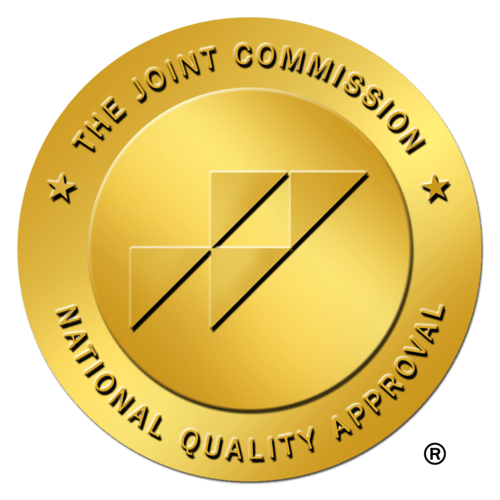
In the world of healthcare, staffing is crucial to ensuring continuous, high-quality patient care. One unique staffing solution that many healthcare facilities utilize is “locum tenens.” But what does this term mean, and why is it an essential concept in healthcare?
What is locum tenens?
"Locum tenens" is a Latin phrase that translates to “placeholder” or “one holding a place.” In healthcare, it refers to a temporary physician, nurse practitioner, physician assistant, or other healthcare professional who fills in for another professional who is on leave, vacation, or who has left the position unexpectedly. Essentially, a locum tenens healthcare provider steps in to "hold the place" of a permanent provider for a designated period, ensuring that patient care continues without interruption.
How does locum tenens work?
Locum tenens providers are usually hired through staffing agencies that specialize in connecting healthcare facilities with temporary professionals. These providers may work in a variety of settings, including hospitals, private practices, urgent care centers, and community health clinics. They can cover a range of specialties, from general practice to highly specialized fields like cardiology or surgery.
Here’s how the locum tenens process typically works:
- Facility Need: A healthcare facility identifies a need for temporary coverage due to a physician or provider being unavailable.
- Agency Recruitment: The facility contacts a locum tenens staffing agency to find a qualified provider who matches the specific requirements, such as specialty, location, and duration.
- Contract and Credentialing: The agency handles the contract negotiations, licensing, credentialing, and any other necessary paperwork.
- Placement: The locum tenens provider arrives at the facility to provide care for the agreed-upon duration. This can range from a few days to several months, depending on the facility’s needs.
How does locum tenes differ from per diem or PRN work?
Locum tenens differs from per diem or PRN (pro re nata, or "as needed") positions primarily in terms of duration, scope, and commitment. While locum tenens providers are hired to fill a specific role for a set period, often ranging from a few days to several months, per diem or PRN staff are employed on an as-needed basis, usually to cover short-term staffing shortages or unexpected absences on a daily or shift-by-shift basis.
Locum tenens professionals are typically contracted through agencies and may travel to various locations to provide coverage, whereas per diem or PRN staff are often local, part-time employees who work within a single facility. Additionally, locum tenens positions often involve more extensive contracts and credentialing processes, while per diem or PRN roles offer more flexibility in scheduling but may not provide the same level of job security or continuity.
Pros of locum tenens for healthcare professionals
- Flexibility: One of the biggest advantages of locum tenens work is the flexibility it offers. Healthcare professionals can choose when and where they want to work, allowing them to balance their personal and professional lives more effectively.
- Variety and Experience: Working in different settings and locations exposes locum tenens providers to diverse patient populations, healthcare systems, and medical practices, which can enhance their skills and experience.
- Higher Compensation: Locum tenens professionals often receive higher hourly rates or salaries compared to their permanently employed counterparts. Many agencies also cover travel, housing, and licensing expenses, making it a financially attractive option.
- Reduced Administrative Burden: Since locum tenens providers are hired to fill specific needs for a limited period, they are often exempt from administrative responsibilities like attending meetings or participating in committees, allowing them to focus purely on patient care.
- Opportunities for New Graduates and Retirees: For newly graduated healthcare professionals, locum tenens can offer an opportunity to gain experience and explore different work environments. For retirees, it provides a way to stay active in their profession without committing to a full-time role.
Cons of locum tenens for healthcare professionals
- Lack of Stability: Locum tenens work is temporary by nature, which means there may be periods without work. This lack of job security can be challenging for some professionals.
- Limited Benefits: While locum tenens providers often receive higher pay, they typically do not receive benefits such as health insurance, retirement plans, or paid time off. This lack of benefits can be a significant downside for some.
- Constant Adjustment: Working in different settings means constantly adjusting to new teams, protocols, and patient populations. This can be mentally and emotionally exhausting, especially for those who prefer consistency and routine.
- Travel and Relocation Challenges: Frequent travel or relocation can be difficult, especially for those with families or personal obligations. The need to frequently adapt to new environments may not suit everyone’s lifestyle.
- Limited Continuity of Care: Locum tenens providers may find it challenging to establish long-term relationships with patients due to their temporary status, which can affect the continuity and quality of patient care.
Pros and cons of locum tenens for healthcare facilities
Locum tenens providers offer healthcare facilities a flexible and cost-effective solution for filling temporary staffing gaps, such as those caused by vacations, leaves of absence, or unexpected departures. They allow facilities to quickly adjust staffing levels in response to fluctuating patient volumes or to provide specialized care that may not be available locally, which is especially beneficial in rural or underserved areas. Additionally, locum tenens arrangements can serve as a trial period for potential permanent hires, allowing facilities to assess a provider’s fit and performance before making a long-term commitment.
However, there are drawbacks, including higher initial costs due to increased pay rates, agency fees, and onboarding expenses, as well as the potential for reduced continuity of care and frequent turnover. The adjustment period required for temporary providers to adapt to a facility’s specific procedures and systems can affect productivity, and the process of credentialing and licensing can be time-consuming, causing delays in filling critical staffing needs.
Conclusion
Locum tenens is a valuable staffing solution in healthcare, offering flexibility, variety, and a chance for professionals to explore different work environments while helping healthcare facilities fill critical gaps in patient care. While there are pros and cons to both providers and facilities, locum tenens remains a viable option for many healthcare professionals and organizations looking for temporary coverage solutions.
For those considering locum tenens work, understanding the benefits and challenges is key to making an informed decision about whether this flexible, dynamic career path is the right choice.





